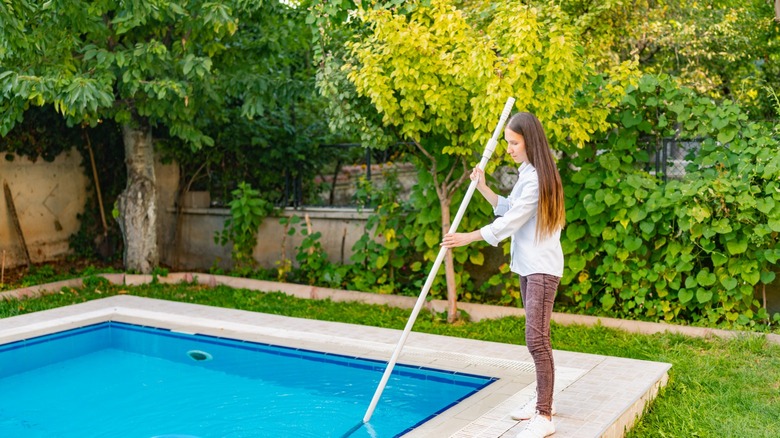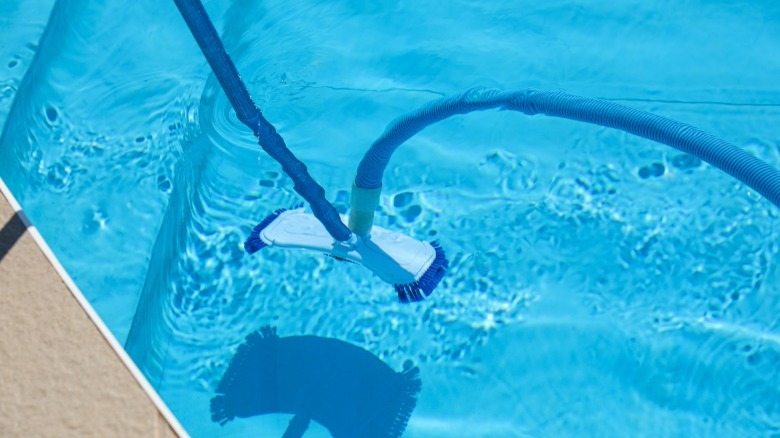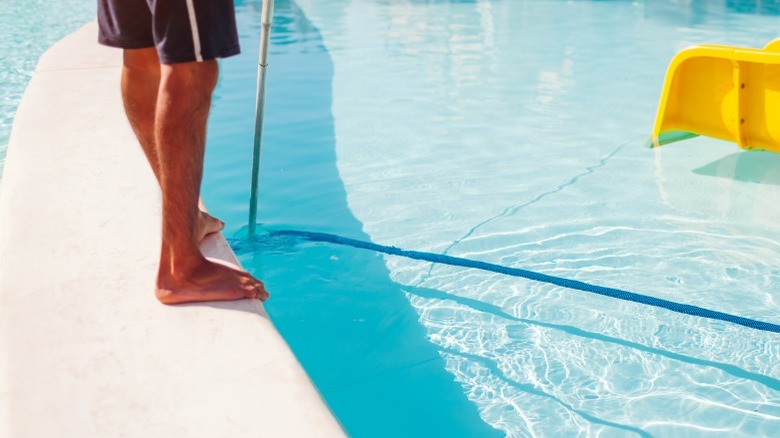The Best Method For Vacuuming Your Pool And How Often To Do It
Here we are again — summer and swimming weather are upon us! For those who have a pool to maintain, there's a lot to do, including vacuuming it, which is a pretty big undertaking. If you're wondering how often this needs to be done, it should typically be about once a week. And while there might be shortcuts and variations in methods, tackling it in the most straightforward manner is best, and we're going to take you through it step by step.
Having a pool is actually a lot of work, and even if you have an automatic pool cleaner, it's still necessary to use a manual vacuum. Manually vacuuming the pool is necessary to get rid of algae and debris an automatic cleaner cannot eliminate. You'll need a vacuum head appropriate to the type of pool you have, a vacuum hose according to the size of your pool, and a telescopic pole (a skim vac is optional but handy).
Assemble the vacuum
After you have all the parts to the manual pool vacuum together, make sure the pump and filter are running. Now attach the vacuum head to the open end of the telescopic pole with the attached handle clip and pin (it should easily snap in place). Then, attach one end of the hose to the top of the vacuum head, and place this entire end of the assembly — vac head, hose, and telescopic pole — into the pool so the back of the vacuum head is resting on the floor. Make sure the vacuum inlet is the singular open line to the pump unless you want all your work undone.
Before attaching the other end of the hose to the skimmer, hold it up to one of the return jets in the pool until there are no air bubbles coming out of the hose attached to the vacuum — this means all the air has been removed. From here, you can transfer the hose at the return jet to the skimmer. Be sure to use your hand to block the open end of the hose when you remove it from the jet so that no air gets in when transferring it. If you're using a skim-vac plate, attach the plate to the end of the hose you're holding and insert the plate into the skimmer on top of the basket to form a seal. If you skipped the skim-vac plate, remove the basket from the skimmer and insert the open end of the hose into the inlet at the bottom of the skimmer. Either way, the seal must be tight, so be sure to block the hose hole anytime you're transferring it.
Choose the proper setting and vacuum the pool
Now that you've accomplished this, it's time to choose the right setting and begin vacuuming. If the pool has a lot of debris, set the filter valve to "waste." If you're just doing a light cleaning, you can simply leave it on the "filter" setting. If you choose the "waste" setting, it's important to remember to place a running garden hose in the pool to replace the water that is lost during the vacuuming process.
You can now vacuum the pool, starting with the shallow end and making nice, slow passes in long, straight lines as much as possible. Be sure to check the pump strainer every so often and empty it when necessary. When you're satisfied with the job, disconnect everything and clear the bottom of the skimmer. Return the setting to "filter" if you changed it, and check the pH balance of your pool (7.2 to 7.8 is acceptable, 7.4 to 7.6 is ideal). Vacuuming once a week should be enough unless something happens — like a storm — that fills it with debris. Keeping your pool regularly vacuumed and performing vigilant routine maintenance will reward you with a lifetime of happy, fun summer memories!


